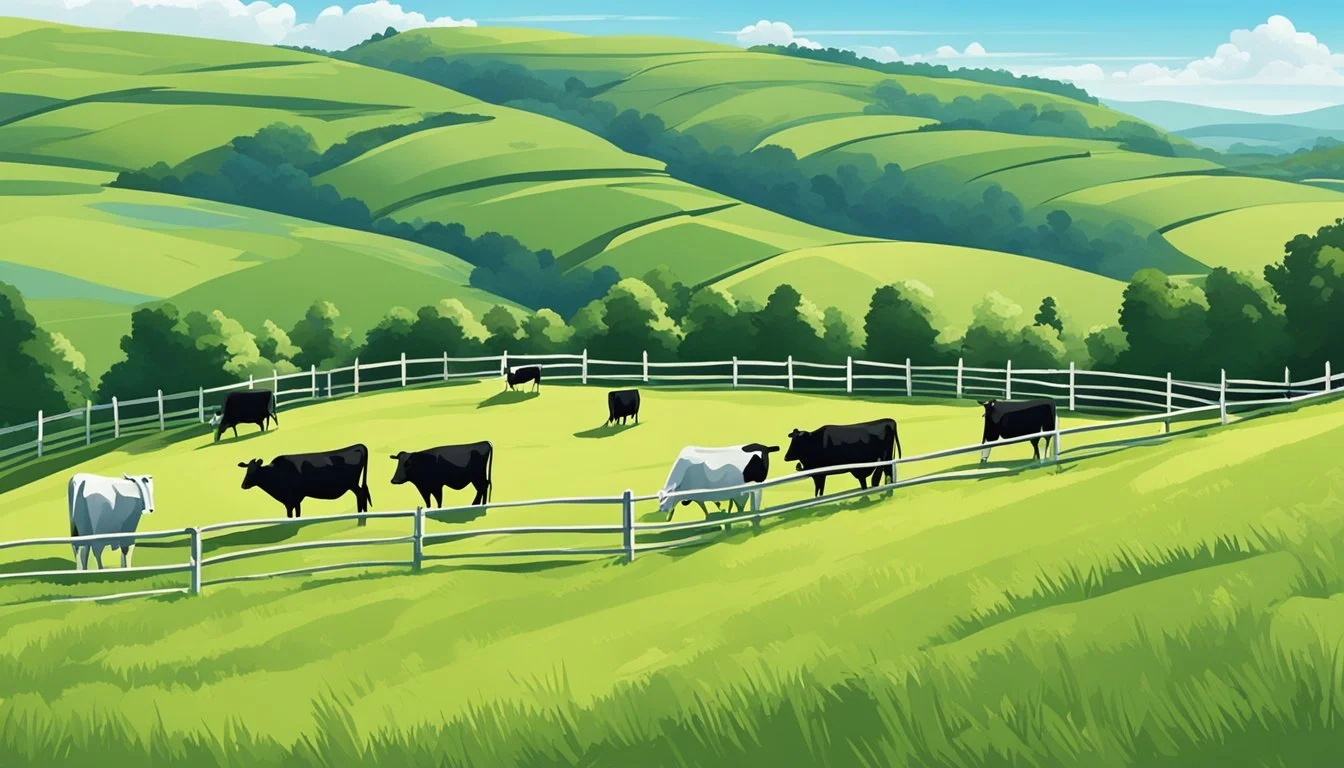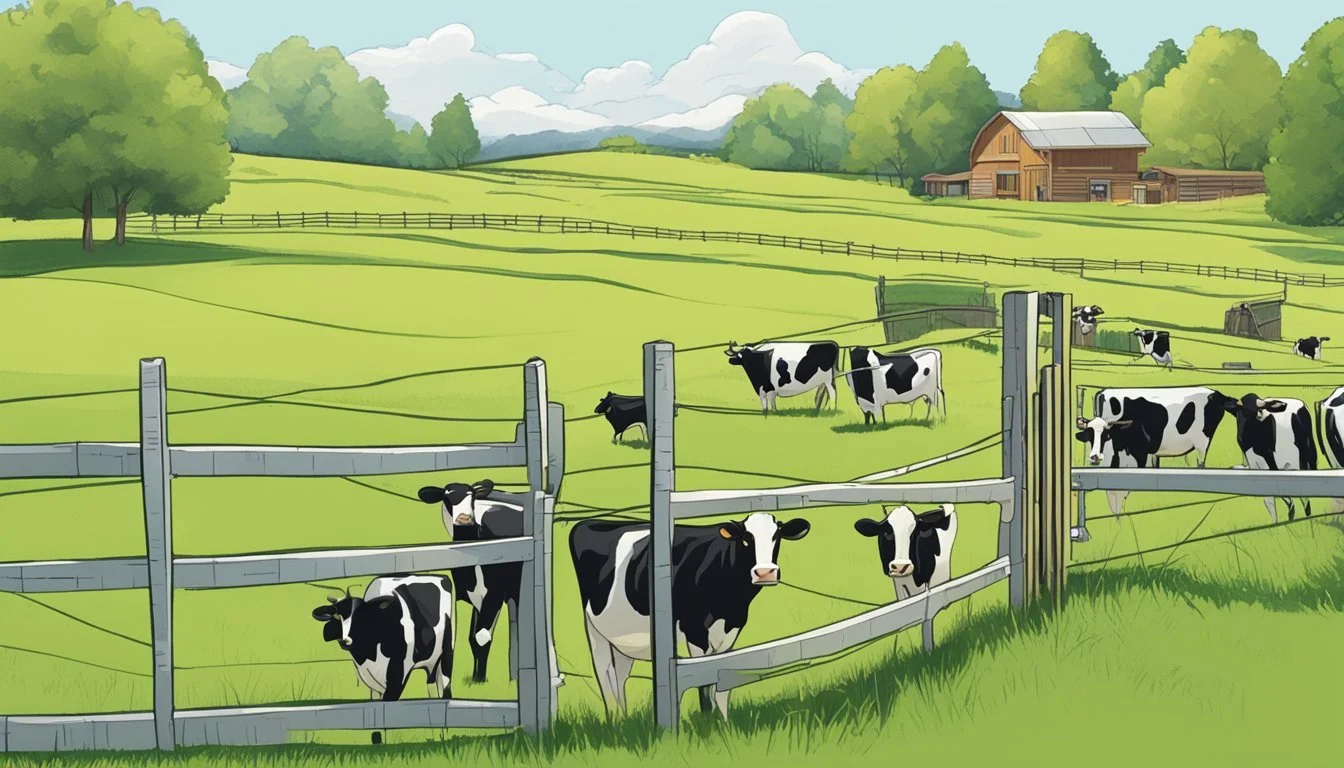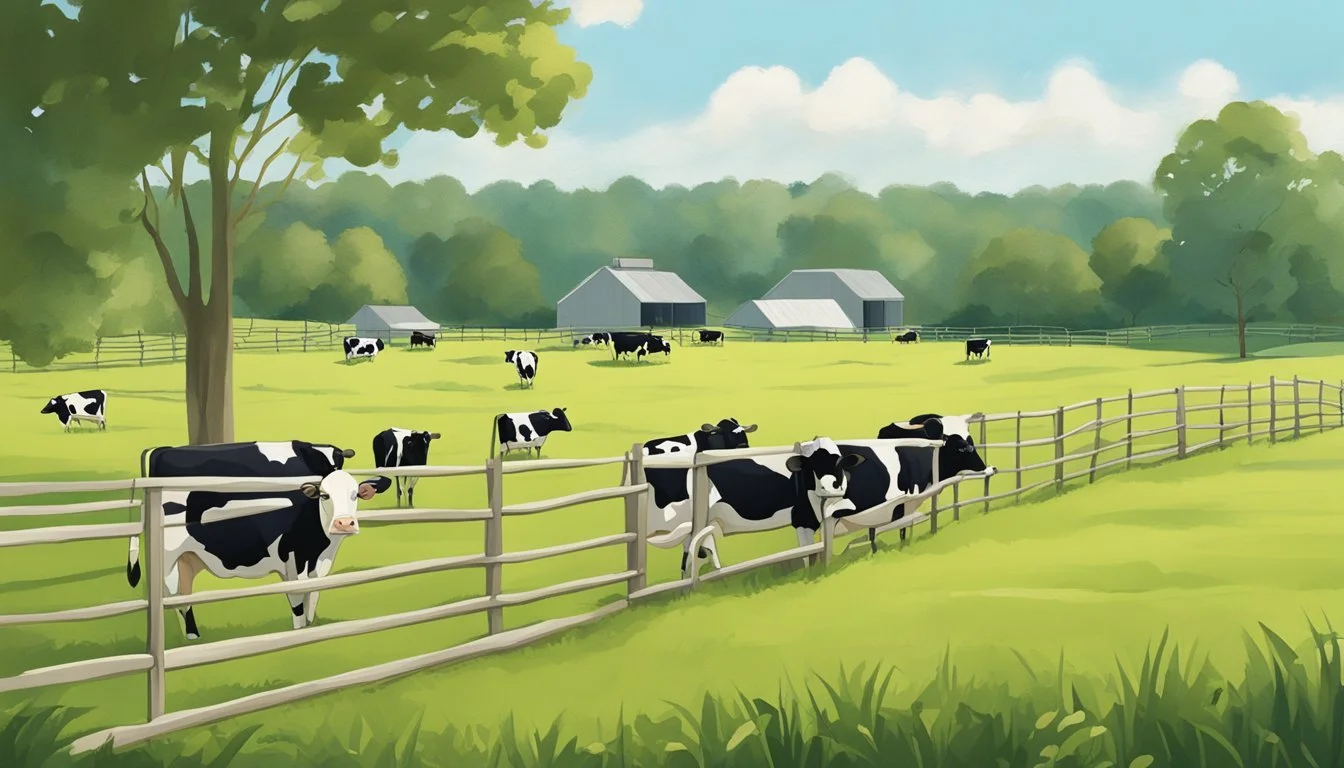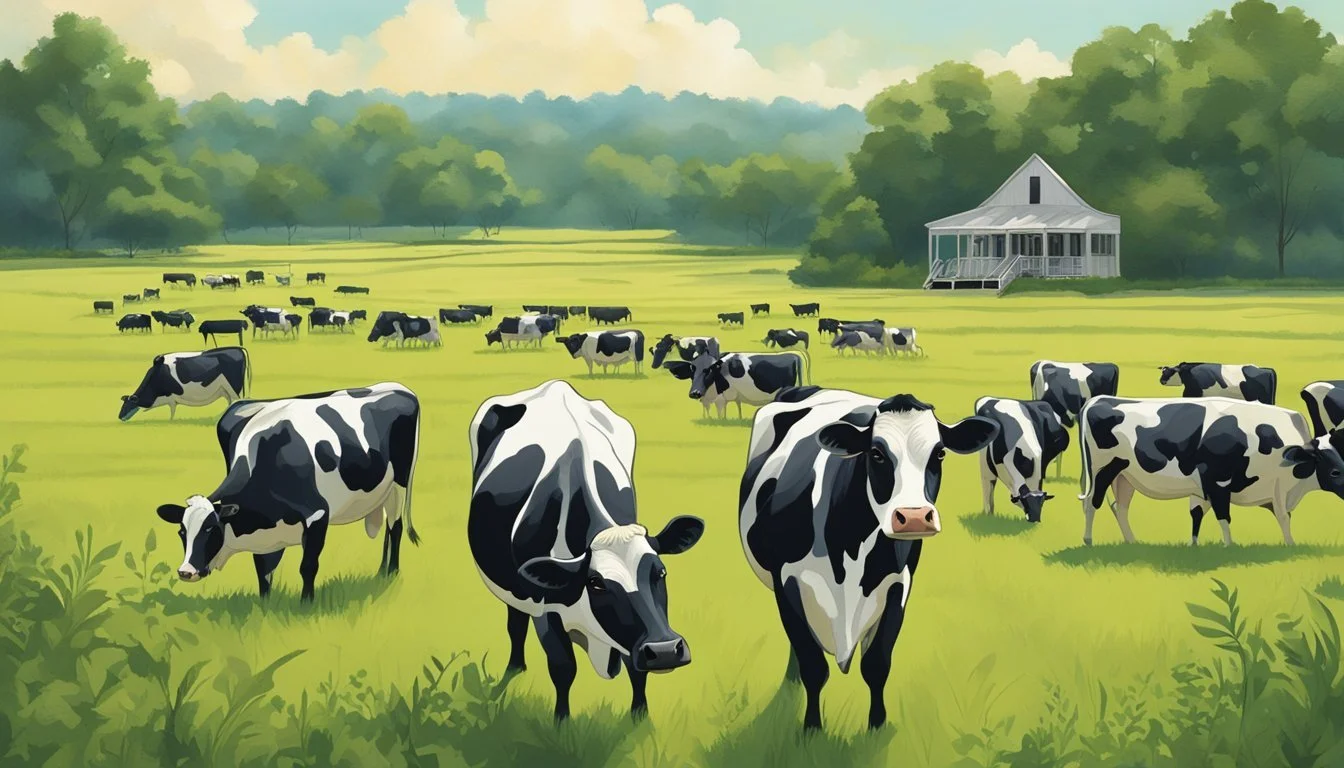Stocking Rate Mississippi
Determining the Optimal Number of Cows per Acre
Determining the appropriate stocking rate is a critical consideration for cattle producers in Mississippi who aim to optimize pasture uses while maintaining animal health and productivity. Stocking rate refers to the number of animals grazing a given area over a certain period. It's a balance between the forage available and the forage requirements of the herd. Overstocking can lead to overgrazing and pasture degradation, while understocking can result in forage waste and lessened economic return.
In Mississippi, cattle production relies heavily on forage-based systems. Factors influencing stocking rates include the type of forage present, soil fertility, growth rate of pastures, and the season. For instance, a more fertile pasture that is well-managed may support a higher stocking rate by producing more accessible nutrients for grazing cattle, thus allowing more cattle per acre compared to less fertile or poorly managed pastures.
Every property is unique and the stocking rates can vary significantly. As general guidance, it's been suggested for Mississippi producers to aim for stocking rates that align with the pasture growth rate, ensuring that cattle have suitable forage throughout the grazing season. It is up to the producers to continually assess and adjust their stocking rates to align with changing conditions and management goals.
Understanding Stocking Rate
Stocking rate is a fundamental concept in managing grazing livestock. It dictates the sustainability of the pasture and the well-being of the cattle.
Defining Stocking Rate
Stocking rate refers to the number of livestock units grazing a given land area for a specific time period. It is often expressed in animal units (AU) per acre, where one animal unit is typically equivalent to one 1000-pound cow. The stocking rate directly influences pasture condition, animal health, and forage availability.
Principles of Stocking Rate
Understanding the principles of stocking rate is critical to supporting the number of cows per acre without overgrazing. Maintaining a balance between forage demand by the cattle and forage supply from the land is key. If the forage supply is depleted faster than it can regenerate, this can lead to overgrazing and pasture degradation.
Determining Carrying Capacity
Carrying capacity is the maximum number of animal units a given parcel can support for a specific period without causing ecological damage. To determine this, one must assess the forage growth over time and calculate the pastures' average forage production. In Mississippi, for example, the assessment can be based on the forage growth estimates using guidelines as suggested by Mississippi State University research. Then, carrying capacity can be estimated with the equation:
AU per acre = (Total Forage Growth in Pounds/Acre) / (Forage Demand of One AU)
The concept of animal unit month (AUM) is also used, representing the forage needed to sustain one animal unit for one month. Matching the AUMs available to the forage demand will ensure that the stocking rate is appropriate for the property's carrying capacity.
Forage Management in Mississippi
Managing forage in Mississippi is crucial due to the state's ability to support a variety of forages, which are fundamental to sustaining livestock, particularly beef cattle. Efficient utilization of forages ensures a profitable operation by maximizing the number of cows per acre the land can support.
Types of Forage
Mississippi's landscape allows for a diverse array of forage types suitable for cattle grazing. Key forages include warm-season perennial grasses like Bermuda and Bahia grasses, cool-season annual grasses such as rye and ryegrass, and legumes like clover, which have the added benefit of fixing nitrogen and improving soil fertility. This variety is essential for year-round grazing systems and optimizing forage production.
Forage Production and Quality
Forage production and quality in Mississippi are influenced by soil fertility, variety choice, and management practices. It is necessary to maintain proper soil pH and fertility levels to maximize forage yield and quality. Strategies like rotational grazing can improve forage stands by allowing for regrowth and recovery, which directly impacts the forage production capacity of the land.
Seasonal Forage Availability
The state enjoys a long growing season and significant average annual rainfall, which are conducive to high forage availability. Nevertheless, producers must plan for the seasonal nature of forages:
Spring and Fall: High-quality forages such as clover and rye are plentiful. Producers can exploit this by implementing a stockpiling strategy to extend grazing and minimize hay supplementation.
Summer: Perennial pastures dominate, and producers can enhance these with summer annuals for added forage support.
Winter: Stockpiling fall-grown forages, such as tall fescue, can reduce winter feeding costs. Supplementation with cool-season forages or hay may be necessary.
By understanding the types of forage available, optimizing forage production and quality, and managing seasonal forage availability, Mississippi producers can better determine stocking rates and maintain the health and productivity of their cattle herds.
Grazing Management Strategies
Effective grazing management strategies are crucial for maintaining sustainable livestock operations while optimizing productivity. They involve careful planning of grazing rotation, duration, and efficiency.
Rotational Grazing
Rotational grazing is a practice where cattle are moved between paddocks to allow pastures to recover, promoting better forage growth and reducing grazing pressure. Mississippi State University supports this method, noting that properly managed rotational grazing leads to a more efficient use of pastures, potentially supporting higher stocking rates.
Grazing Rotation and Duration
Grazing rotation refers to the timing and sequence in which cattle are moved from one paddock to another. The duration typically varies based on pasture growth rates and can range from several days to a few weeks. A carefully planned rotation schedule ensures pastures are grazed at optimal times for both animal nutrition and forage recovery.
Optimizing Grazing Efficiency
To optimize grazing efficiency, it's important to strike a balance between the number of animals and the available forage during the grazing season. Increased efficiency can be achieved by tailoring the grazing pressure to match forage growth, thus maximizing production per acre while maintaining pasture health.
Livestock Considerations
In Mississippi, ideal stocking rates depend on cattle characteristics and land capacity. Proper livestock management ensures animal health and land sustainability.
Cattle Body Weight and Breed
Breeds and body weight play a crucial role in determining the appropriate stocking rate. For instance, beef cattle production in Mississippi typically involves breeds which are adapted to the regional climate and forage availability. A common metric involves the average sized cow (1,200 lbs), which, on unirrigated pasture, might require 15-18 acres per cow for year-round support.
Stocking Rate and Livestock Health
Maintaining appropriate stocking rates is essential for cattle health and pasture condition. Overstocking can lead to overgrazing, which in turn can deteriorate herd health and increase erosion and weed encroachment. For stocker cattle, producers must carefully balance the number of cattle with the available forage to ensure the livestock are well-fed and the land is not overburdened.
Alternative Livestock: Chickens and Their Impact
Chickens require considerably less space than cattle, making them a viable alternative for diversifying livestock production on a property. The impact of chickens on land use is minimal compared to cattle, as they can thrive on smaller acreage with proper management, and their foraging can benefit soil health. However, the contribution of chickens to overall stocking rates is significantly different from that of cattle and should be calculated separately.
Environmental Factors Affecting Stocking Rate
Stocking rate in Mississippi is significantly influenced by environmental factors that can vary annually and seasonally, directly impacting the amount of forage available for cattle.
Impact of Weather Patterns
Weather patterns play a vital role in forage production and regrowth, which in turn affect the stocking rate. Adequate rainfall during the growing season promotes healthy pasture growth, enabling a higher stocking rate. Conversely, winter months may result in dormant forage, necessitating a reduced stocking rate to prevent overgrazing.
Drought Management
Drought presents a major challenge to maintaining an appropriate stocking rate. During drought, forage production declines, often dramatically, requiring producers to have a plan for reducing stocking rates or providing supplemental feed. Efforts must be made to monitor forage availability and adjust stocking rates promptly to prevent overgrazing and long-term pasture damage.
Grazing Distribution and Intensity
Proper grazing distribution and intensity are crucial for sustainable stocking rates. Overgrazing in some areas combined with undergrazing in others can result from poor livestock distribution, leading to reduced overall forage utilization. Practices that encourage even grazing, such as rotational grazing, help maintain consistent forage availability, allowing for more accurate stocking rate determinations. Additionally, selective grazing can affect forage regrowth and should be managed to avoid preferential depletion of certain forage species.
Financial Implications
Understanding the financial aspects of stocking rates is crucial as they directly influence the profitability of the cattle operation. Decisions regarding the number of cows per acre are intertwined with production costs and the economic efficiency of grazing systems.
Calculating Production Costs
Calculating production costs is a foundational step in determining stocking rates for Mississippi beef cattle operations. These costs may include feed, vet services, labor, and capital investments. Particularly, forage-based systems in Mississippi hinge on understanding the total land area required to sustain the herd efficiently. For instance, production in the Northeast has seen a need for about 1.5 grazed acres per beef cow which could stand as a relative indicator for the Mississippi region based on local forage productivity.
Key Components to Consider in Production Costs:
Feed: Major expense, including the cost of forage and supplements.
Healthcare: Regular veterinary care and vaccinations.
Labor: Cost of manpower for daily operations.
Land and Capital: Investment in land and equipment necessary for operations.
Economic Efficiency of Grazing Systems
The economic efficiency of grazing systems in Mississippi pivots on achieving optimal stocking rates. It is essential to match the number of beef cows to the carrying capacity of the land to maximize the return on investment. Higher stocking rates can lead to overgrazing, reducing forage quality and quantity which may increase feed costs and diminish weight gain per animal.
Essential Factors that Affect Economic Efficiency:
Inventory Management: Maintaining herd size within the carrying capacity of the land.
Grazing Management: Implementing rotational grazing to improve forage use and maintain soil health.
Production Value: Beef cow inventory impacts production value; a fine balance is required not to exceed the grazable land to maintain efficiency.
Financial assessments should consider the efficiency of the grazing system as a determinant of the economic outcome. The total inventory of beef cows should align with the total land area available to optimize production without incurring unnecessary costs or land degradation.
Addressing Overgrazing Risks
With proper management, one can support a sustainable number of cattle per acre in Mississippi while minimizing the risks of overgrazing. This involves recognizing signs of overgrazing, preventing overstocking, and balancing forage supply and demand.
Signs of Overgrazing
One can detect overgrazing by observing the health of pasturelands and the behavior of the cattle. Indicators include:
Reduced forage height below the species-specific minimum, affecting regrowth.
The presence of bare soil and an increase in undesirable plant species that cattle typically avoid eating.
Soil compaction, which can be evident from water pooling after rain due to reduced infiltration.
Cattle may show signs of insufficient forage consumption, like reduced weight gain.
Preventing Overstocking
To prevent overstocking:
Use a stocking rate carefully calculated based on the carrying capacity of the land, considering factors like forage type and soil fertility.
Implement a rotational grazing system to allow forage regeneration.
Monitor grazing days and adjust the number of cattle or move them to different pastures as necessary to avoid overuse.
Balancing Forage Supply and Demand
Balancing forage supply and demand requires:
Regularly assessing forage production and adjusting stocking rates accordingly.
Having a backup plan, such as supplemental hay, especially during times of low forage availability.
Understanding the relationship between forage consumption and grazing days to ensure enough forage is grown to meet cattle needs without the risk of overgrazing or understocking.
Monitoring and Adjusting Stocking Rate
Accurate monitoring and timely adjustments are crucial for maintaining an ideal stocking rate. They must take into account forage availability, utilization rates, and the conditions on the ground to support healthy pasture and livestock.
Using a Grazing Stick
A grazing stick is an essential tool for farmers in Mississippi to measure forage availability. It allows them to estimate the quantity of available dry matter for grazing animals. To use it effectively, they must place the stick at random locations around the pasture and record measurements consistently. The stick's markings help determine the pasture's forage mass, which can be translated into available dry matter intake for the livestock.
Assessing Forage Availability and Utilization
Farmers should assess forage availability regularly to ensure animals have enough to eat without overgrazing. They measure utilization rate, which is the percentage of forage consumed by the cattle. Utilization rates over 50% can indicate overgrazing. A balanced grazing method promotes uniform forage consumption and allows time for pasture recovery. The forage utilization levels should be monitored throughout the grazing season, providing valuable feedback for stocking rate decisions.
Adapting to Changing Conditions
Adapting to changing weather conditions, forage growth, and animal needs is vital. Farmers should be ready to alter their stocking rates when faced with drought, floods, or other environmental changes. Adjusting the number of livestock per acre or modifying the grazing plan can help maintain a balance between forage supply and forage consumption. This proactive approach ensures the wellbeing of the animals and the sustainability of the pastureland.
Health and Parasite Management
Proper health and parasite management is essential in determining the stocking rate for Mississippi properties as it directly influences livestock well-being and pasture productivity.
Managing Parasites in Grazing Systems
Parasites significantly affect livestock grazing systems by reducing animal health and growth rates, which can impact the overall stocking rate. In Mississippi, common parasites in cattle include gastrointestinal worms, lungworms, and liver flukes. Strategic management methods involve:
Rotational Grazing: Alternating pasture usage can break the life cycle of parasites. Allowing a pasture to rest for at least 90 days before reintroducing livestock can reduce parasite loads.
Condition Scoring: Keeping an eye on livestock body condition helps assess the burden of parasitism. Rapid declines may signal heavy infections and prompt intervention.
Fecal Egg Counts: Regular monitoring helps determine the efficacy of deworming protocols and guides treatment decisions.
Selective Treatment: Targeting only cattle that require treatment based on fecal egg counts can prevent the development of drug resistance.
Integrating Livestock Health into Stocking Decisions
The health status of livestock is a critical factor when calculating accurate stocking rates. Disease and parasite burdens can lower cattle's feed efficiency and rate of weight gain, hence a property might support fewer animals. Key management considerations include:
Health Records: They should be meticulously maintained for each animal to monitor health trends and manage stocking rates more accurately.
Preventive Measures: Vaccinations and regular deworming schedules tailored to the property's parasite risk can uphold herd health.
Nutrition: Adequate dietary supplementation, especially in times of high parasite exposure, supports robust immune systems capable of withstanding infections.
Environmental Management: Implementing proper drainage in pastures and avoiding overstocking prevents the creation of environments conducive to parasite proliferation.







